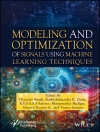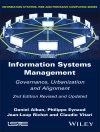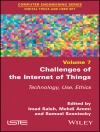This book discusses how computers are shaping contemporary society, with a tight focus on the role of corporations and governments. It is aimed at government policymakers interested in economic development and at private-sector managers who routinely make decisions to acquire and use information technology, now a worldwide expenditure of over $2 trillion annually. The book will also interest a wide range of academics concerned with the sociology, history, economics, and the effects of IT on contemporary society, ands to the general trade market.
Зміст
Preface ix
1 Introducing the Big Picture 1
The presence of information technology 2
Megatrends at work 7
How societies use technology to shape their world 19
Notes and references 24
2 How Computers Spread Around the World So Fast 27
Definitions and issues 29
Government-supported/private-sector-driven model 33
National champion model 37
Asian private-sector-driven model 39
Planned economy: public policy model 42
Industry-driven model 48
Corporate diffusion model 51
Application diffusion model 57
Technology-standards diffusion model 59
Patterns, practices, and implications 61
Notes and references 65
3 How Governments Leverage Information Technologies to Improve Their National Economies 71
A brief historical reminder 72
Economic development in a connected world: the big picture 75
How governments use it to encourage economic development 77
What motivates governments to encourage their citizens and economies to use it? 91
Emerging strategies for the most advanced nations compared to rapidly advancing nations 96
The special role of labor 100
Global recession, twenty-first century style 102
Implications for public officials 106
Implications for business leaders 112
The way forward with policies and practices 116
Notes and references 122
4 How Managers and Officials Decide What Technology to Use 129
The kinds of decisions made by managers 131
Types of justification 135
Managerial practices 138
Some possible less effective practices 143
Special role of industries 149
Path forward 151
Notes and references 157
5 Adding Up the Results So Far: Do We Now Live in the Information Age? 163
Why naming an age is a useful exercise and so hard to do 165
What historians can teach us about the process 167
The case against the information age 173
Can we coexist on the frontiers of a new age? 175
Lessons for management and a strategy for change 179
Concluding thoughts 185
Notes and references 186
6 An Expanding Role for Scientists and Engineers 191
The rise of the computer scientist 192
Their role in modern society 197
When scientists and tech folk take things into their own hands 201
When technologists go green 204
Their future world 212
An old role made new 218
Notes and references 220
7 Looking Down the Road into the Twenty-First Century 223
How to see the future of an industry 225
Knowing how information technology is evolving 233
A strategy for managers and public officials 240
Special role of the computer science community 247
The ultimate trend 252
Notes and references 254
8 Keeping Up: Bibliographic Essay 257
The big picture 257
How computers spread around the world 259
Governments leveraging it for economic development 260
Deciding what technology to use 261
Living in the information age 263
Role of technologists 264
Into the twenty-first century 265
Index 267
Про автора
James W. Cortada has thirty-five years of experience with IBM in various sales, consulting, and managerial positions related to information technology and its use. In particular, he helped design and deploy processes related to employee skills development, including IBM’s worldwide consultant skills certification process, sales processes, and specialized training seminars. An author of more than fifty books on the management and history of information technology, Cortada’s work has been translated into Spanish, Portuguese, Chinese, and Korean.












